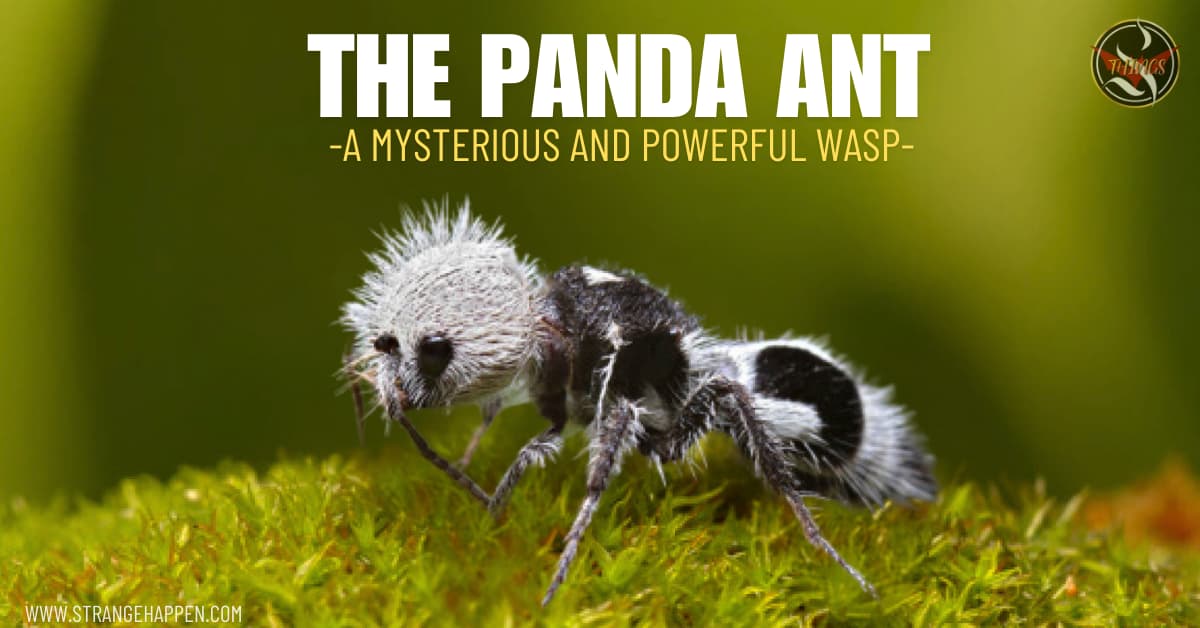Panda Ant

The Panda Ant: A Mysterious and Powerful Wasp
The panda ant (Euspinolia militaris) is an uncommon, remarkable animal that attracts consideration because of its striking highly contrasting tinge, looking like a panda bear. Regardless of its name, this little insect is certainly not an underground bug using any means but a sort of wingless wasp having a spot with the family Mutillidae, generally called “velvet insects.” In this blog, we will investigate everything about the panda ants, including their natural surroundings, life cycle, conduct, and safeguard systems, and that’s just the beginning.
1. The Panda Ant Introduction and Description
The panda ant (Panda subterranean insect) is a bug with a tricky appearance. Its insect-like body and delicate, shaggy outside make it hang out in the bug world, however, it is, truth be told, a wasp. Local to parts of South America, especially Chile, the panda ant is known for something other than its looks; its strong sting deserves it the moniker “cow executioner” because of the aggravation it incurs.
2. Physical Appearance
The panda ant’s striking appearance assumes a vital part in its endurance, both by assisting it with mixing into its current circumstance and flagging risk to possible hunters. The following are a few critical highlights of its actual characteristics:
- Size: Panda ants develop to around 8 millimeters long, making them little yet considerable.
- Hue: Their bodies are canvassed in a thick layer of fur with a particular highly contrasting example, giving them a panda-like appearance.
- Distinction in sexual orientation: Female panda ants are wingless and look like insects, while guys have wings, even though they are less usually seen in nature.
These actual qualities upgrade their cover as well as go about as an impediment to hunters, featuring the panda ants’ strong sting.
3. Habitat and Living Area
The panda ants environment is essential to its endurance, giving the best circumstances to its conceptive and personal conduct standards. The following are the essential parts of its living climate:
- Geographic Reach: ants are basically tracked down in Chile and different pieces of South America.
- Favored Living space: They flourish in dry, desert-like conditions with free, sandy soil, which permits them to really tunnel and lay their eggs.
These natural surroundings furnish the panda subterranean insect with the space and assets it needs for tunneling and parasitizing other bug homes.
4. Life Cycle and Behavior
The existence cycle and conduct of the panda ant rotate around its single and parasitic nature. The following are the central issues:
- Regenerative Procedure: Ants take part in the parasitic way of behaving. Female ants find the homes of different bugs, especially honey bees or wasps, and lay their eggs inside the host’s home.
- Egg and Larval Stage: After incubating, the ant’s hatchlings feed on the host bug’s hatchlings, consuming them and developing until they are prepared to arise as grown-ups. This parasitic methodology guarantees their young have a protected and supplement-rich climate.
- Sovereign Panda Ant: There are no sovereign panda ants, as panda ants are single animals. Every female demonstrates autonomously, finding hosts and laying eggs all alone.
This life cycle features the ants proficient parasitic strategy for generation, which upholds their endurance in nature.
5. Food and Feeding Habits
The food and taking care of propensities for the panda subterranean insect are intently attached to its parasitic way of life. Here are the fundamental focuses:
- Diet: Panda subterranean insect hatchlings are parasitoids, benefiting from the hatchlings of different bugs, particularly honey bees and wasps. Grown-up panda subterranean insects, in any case, don’t have a huge eating regimen and normally make due for brief periods without consuming a lot.
- Food Capacity: Because of their lone and parasitic nature, panda ants don’t take part in food capacity. Their hatchlings feed straightforwardly on the host’s posterity inside the host’s home, making food stockpiling superfluous.
This parasitic taking care system permits panda subterranean insects to meet their healthful necessities during their formative stage without the intricacies of food assortment or capacity.
6. Defense Mechanisms
One of the panda ants most astounding attributes is its profoundly compelling protection framework:
- Sting: Panda ants are furnished with a difficult sting, sufficiently strong to stop bigger hunters. Their sting is well known to the point that it has been contrasted with the exacerbation of being kicked by a cow, in this way the sobriquet “cow killer.”
- Reinforcement Like Exoskeleton: Their exoskeleton is very intense, giving them extra assurance from hunters and natural risks.
7. Family and Classification
The family and order of the panda subterranean insect feature its place inside the more extensive bug world, particularly among wasps. The following are the key subtleties:
- Family: Panda ants have a place with the family Mutillidae, which comprises more than 7,000 types of wasps. All individuals from this family are perceived for their splendid tinge and strong stings.
- Subfamily: Panda ants are important for the Euspinolia subfamily, known for little, velvet-shrouded wasps with comparative physical and conduct attributes.
- Single Way of Life: Panda subterranean insects are singular bugs, meaning they don’t shape states or have complex social designs like honey bees or subterranean insects. Every panda subterranean insect lives and works autonomously.
This order puts the panda ants inside a different and novel gathering of wasps, stressing their single and exceptionally guarded nature.
8. Way of Living
The approach to living for the panda subterranean insect is revolved around its single way of behaving. The following are the key angles:
- Single Nature: Not at all like genuine subterranean insects, panda ants carry on with altogether singular existences. Females wander the ground looking for homes to parasitize, while guys are less dynamic and seldom seen.
- No Hive or Settlement: Panda ants don’t frame provinces and thus come up short on organized jobs found in friendly bugs like laborers, robots, or sovereigns. Every individual lives and works freely from birth too much.
This single way of life guarantees that panda subterranean insects depend exclusively on their impulses and capacities for endurance, without the help of a social design.
9. Fascinating Facts About the Panda Ant
The panda ants is an interesting animal with remarkable variations and qualities. The following are a few captivating realities:
- Endurance in Unforgiving Circumstances: Panda ants are equipped for flourishing in bone-dry, desert-like conditions because of their capacity to hold dampness and their solid exoskeleton.
- No Requirement for a State: Dissimilar to numerous bugs that depend on settlements for endurance, panda subterranean insects have developed a single way of life that permits them to flourish without the complicated social designs found in species like honey bees and insects.
- Seldom Seen Guys: Albeit male panda ants have wings, they are seldom seen in nature. Guys invest a large portion of their energy in stowing away, just arising for the end goal of mating.
These one-of-a-kind characteristics make the panda ant a tough and singular survivor in brutal conditions.
Conclusion
The panda ant is a spell-binding bug known for areas of strength for its striking appearance. Notwithstanding its panda-like looks, its way of behaving uncovers the intricacy of life on The planet. Other intriguing bugs incorporate Flea Bites, known for their aggravating and irritating consequences for people and creatures, and Carpet Beetles, which can make harmful materials and put away items. Also, the strolling stick insect grandstand momentous disguise for endurance, while the Zombie Beetles feature unusual connections inside biological systems because of its change by parasitic growths.
Whether appreciated for its magnificence or dreaded for its sting, the panda subterranean insect, alongside its captivating bug partners, epitomizes nature’s staggering variety and versatility.




